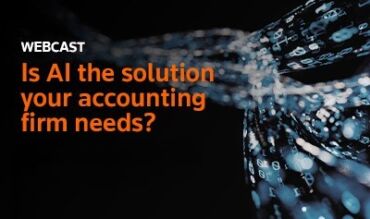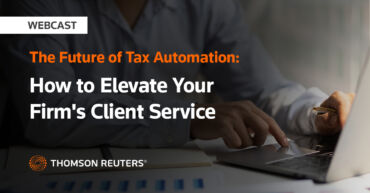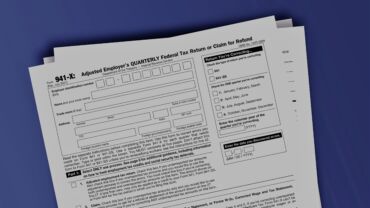Q&A with Corey Greene, Customer Proposition Strategy Lead, Small-Mid Firms - Tax and Accounting Professionals
For an inside look at what the Onvio beta program was all about, we sat down with Corey Greene, Customer Proposition Strategy Lead for Small-Mid Firms. We discussed the rationale behind the beta program and what learnings will be incorporated into the Onvio strategy going forward.
Q: First, what was the purpose of the Onvio beta program?
A: The Onvio beta program was created to ensure go-to-market readiness prior to the commercial launch of Onvio Tax. Specifically, we wanted to validate that we were fully equipped in all of our key areas: product readiness, commercialization strategy, and customer success (i.e., training and onboarding support).
In order to get the most out of the beta program, we set out to find a group of firms willing to get their hands dirty. We wanted them to dive in with us, go through the process in a real-world environment, and then subsequently engage with us to provide candid feedback and input on their experience.
Q: How did you go about recruiting the beta participants?
A: Our approach to recruiting participants was multi-phased. We started by internally discussing what perspectives we wanted to be represented as a part of the beta program. We sat down and talked through things like, do we want any large firms represented? And if so, what should that ratio look like? Do we want any emerging firms represented? Do we want to focus on regionality? Do we want to focus on prior product ownership?
From there, we defined exactly what our goal ranges were for each of those perspectives being represented in the beta. That’s how we decided who to send the initial invitations out to. We really wanted to attain a diverse group of firms within the segments that this product appeals to.
Q: How many firms participated in the beta program?
A: As part of our planning, we defined our threshold for the total beta audience size. We had to decide what number of firms we needed to have in order for the experience to be truly valuable. In addition, we needed to figure out our ceiling in terms of the number of firms that we could actually handle without seeing a negative impact on the experience of the participants.
So, in terms of specific numbers, we wanted around 100 beta firms. We thought that would give us enough valuable input and a variety of perspectives. And we wanted no more than 120 firms in total.
In the end, 93 firms total finished the program.
Q: How long did the beta program run?
A: The beta program began in November 2020 just before tax season and concluded in June 2021 due to the tax deadline extension. During this time, participants had the opportunity to engage with us regularly and frequently through learning engagements, such as feedback sessions and surveys, as well as through product usage. So our participants were actually using both commercialized and beta versions of the applications on the Onvio platform in real-world scenarios, rather than just testing environments.
Q: Was there an entry fee to participate? What benefit did the firms have in participating?
A: Yes, firms paid an entry fee for the opportunity to participate in the program. This provided them with access to beta applications within the Onvio platform. Participants had the ability to prepare and actually e-file tax returns, as well as gather information from their clients, house documents, convert, or migrate data from other applications.
You may be thinking, why would someone feel inspired to pay an entry fee? What was the incentive? The answer to that is two-fold. First and foremost, the beta program provided an opportunity to have a seat at the table. Their willingness to pay the entry fee was a testament to their dedication to the next generation of tax and accounting software platforms. They wanted to be a part of those strategic conversations and ensure that their voice was heard and taken into consideration during this developmental phase.
The other component was that participants had the ability to earn credits through participation or engagement throughout the program. So, they actually were able to earn back their entry fee and then some.
Q: What was the experience like?
A: Again, we wanted to make this as much like a real-world scenario or environment as possible. We didn’t simulate anything. We provided them with an order form for entry into the program, the same as they would as if they were buying an application that triggered certain processes internally like fulfillment and entitlement of the appropriate applications on the Onvio platform. Then, they were provided an entirely digital onboarding experience. Typically we involve a bit more white-glove service, but we wanted to test out a completely digital approach.
From there, we had many participant touchpoints. We held welcome sessions and future product roadmap sessions for them to give feedback on our plans for the future of the product. We sent multiple surveys on a variety of topics including feature prioritization. We also offered feedback sessions with regards to onboarding and training, data migration, packaging, and pricing, etc.
We also held roundtables to drive engagement in the program across the board. These differed from the feedback discussions as they were more open in nature. We also held usability studies around the actual workflow. Performance was a big topic that was brought up. So we had a lot of research and learning engagements around that. The usability studies are really just our way of putting data and recorded experience behind some of the comments and feedback that we were hearing.
Q: What were the key learnings from the beta program?
A: The feedback from the program drove the decision around postponing the launch of Onvio Tax. It was quite possibly the most difficult decision that many of those involved have made in their career here at Thomson Reuters—and it was not made lightly.
To be specific, we learned that the onboarding process is not nearly as intuitive as we hoped. We learned that performance across the board was unacceptable—and that included things like speed. It also includes things like bugs and error messages. We also learned that the Onvio Tax application did not provide enough delighters to really warrant a switch from UltraTax.
On the flip side, we also learned what firms really loved about Onvio Tax in its current state versus what they didn’t necessarily care much about or didn’t resonate with. We also learned what product readiness needs to look like before firms will be ready to put their business clients on the platform. And we learned a bit about what the customer’s willingness to pay looks like and their view on our packaging architecture.
Q: What does the future of the program look like?
A: As we look to the future, we will be holding a second beta program for this coming tax season that will be very similar in nature. We are in the early planning stages, but the plan is to pick up where we left off, validate what we learned, ensure we are go-to-market ready, and launch sometime in 2022.
Q: Any final thoughts you’d like to share?
A: Personally, I’m really proud of our beta participants’ willingness to co-develop Onvio with us and take part in a program aimed at furthering the profession during their busiest time of year.
A lot of organizations will bring customers into their strategy development or product development processes for feedback and input, and they’ll take it for what it’s worth, but they will also have preconceived notions or plans sketched out that are ultimately going to proceed one way or the other, regardless of what that feedback is.
As an organization, we did not go in that direction. Instead, we heard our customers loud and clear. While we may have wanted to launch Onvio Tax in April of 2021, we know that would not have been in their best interest.
The best decision we can make for our customers is to refocus internally, hold another version of the beta program, and plan on launching in 2022 so that we can truly validate our go-to-market readiness and ensure Onvio Tax is successful right out of the gate.
If you have questions or want to learn more about Onvio, contact us today
at 800-968-8900.
For more information, visit the new Onvio.












